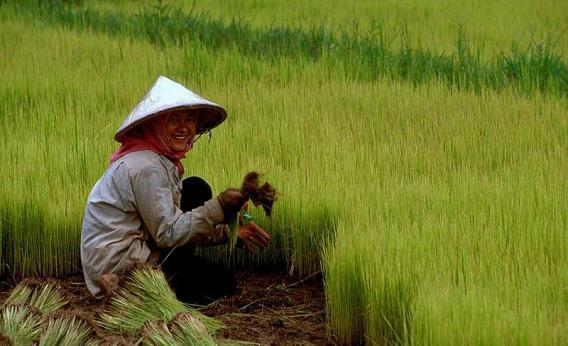One reason I found it a little difficult to get up in arms about recent news reporting on working conditions in Foxconn factories in China is that I’ve seen working conditions on Chinese farms and it counts as the second-saddest thing I’ve ever seen. It’s relentless, back-breaking labor with no machines for no money. The reason people line up for terrible sweatshop manufacturing jobs is that the idiocy of rural life as practiced in pre-industrial societies is even more horrible.
I was reminded of this when I saw Felix Salmon’s excellent chart of the sectoral labor force breakdown of China. They don’t deploy the exact same agriculture/manufacture/services/construction/utilities schema that we use in the United States. Instead they talk about “primary industry,” including agriculture and mining; “secondary industry,” which is manufacturing and utilities; and “tertiary industry,” which is services. I’m not sure where construction goes in the Chinese categorization. At any rate it looks like this:
That’s clearly a lot of secondary industry. But even in China, job growth is coming primarily from the service sector. It’s not a nation of factory workers and it likely never will be. But China has been de-ruralizing very rapidly. And it turns out that one way to characterize the “good old days” of rapid income growth in the United States is as not a move to factories but off of farms:
Farming, it’s important to note, has some special features as a line of undertaking, namely that the amount you can earn is limited by the amount of available land. So if 10 percent of the residents of your village up and leave, abandoning their small plots, the village’s aggregate output doesn’t fall by anything close to 10 percent. Instead, the quantity and quality of land available to each farmer goes up, so income per capita leaps upward completely independently of what it is the 10 percent actually go and do. In medieval Europe, Plague outbreaks used to be associated with increases in living standards for the survivors for precisely this reason. Of course, in an ideal world the missing villagers don’t die; they go off somewhere and do something useful. Maybe it’s work in a factory. But working in a hospital or a call center or building an airport works just as well.
